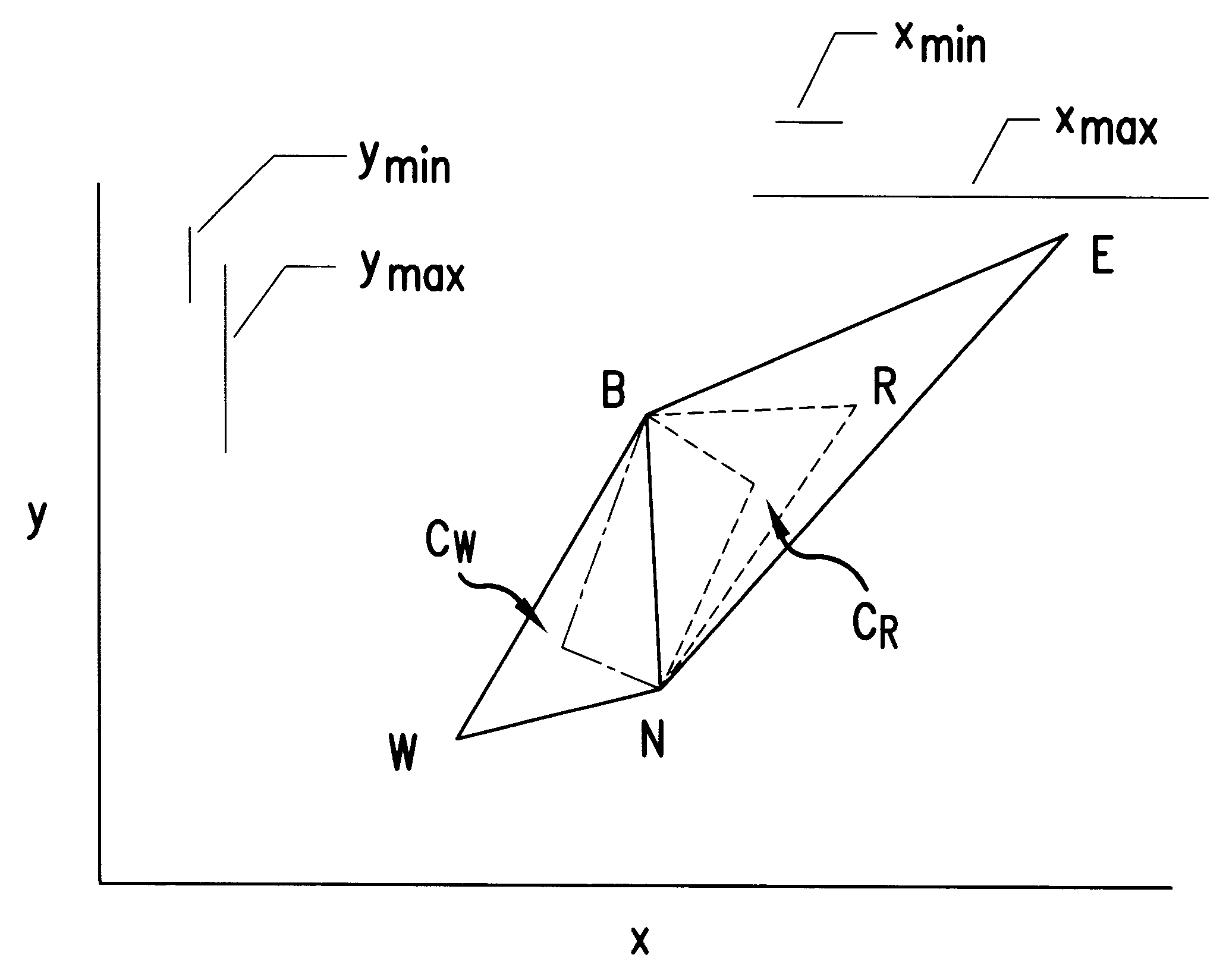Process optimation
- Summary
- Abstract
- Description
- Claims
- Application Information
AI Technical Summary
Benefits of technology
Problems solved by technology
Method used
Image
Examples
first embodiment
FIG. 5 shows the elements of a modified simplex that has been further modified in accordance with the present invention. In this further modified simplex each control variable x, y has an associated minimum step size, x.sub.min, y.sub.min, respectively. The minimum step sizes can be given a certain value by a user or they can be changed during the sequence to take into account variations in the conditions. For example, the minimum step size could be a proportion, e.g. one quarter, of the average step size during the last n steps, where n preferably can be adapted by an operator or be adapted by a program. The projected distance in the direction of each variable of the new vertex from the other vertices in the new simplex is calculated. If a calculated trial would result in a new vertex which is less than the defined minimum step size for one of the variables from all other vertices in the simplex then this vertex is rejected and a further new vertex is calculated in which the step s...
second embodiment
In the invention a modified simplex is further modified by each variable x, y having an associated maximum step size x.sub.max, y.sub.max, respectively. The maximum step sizes can be given a certain value by a user or they can be changed during the sequence to take into account variations in the conditions. For example the maximum step size could be a proportion, e.g. twice the average step size during the last n steps. In this way the size of the steps for each variable are prevented from becoming too large which can lead to the optimisation sequence oscillating round but never finding the optimum region if the width of the optimum region is much smaller than the step size. The projected distance of the new vertex in the direction of each variable from the other vertices in the new simplex is calculated. If a calculated new vertex would result in a step size for a variable which is greater than the maximum step size permitted for the variable then this vertex is rejected or a furth...
third embodiment
the present invention can be made by providing both a minimum step size and a maximum step size for each control variable. In this case, the step size in the direction of a control variable is compared against both the minimum step size and the maximum step size for that control variable. If the step size is greater than the minimum step size and less than the maximum step size for that control variable then for it is accepted, otherwise a new step is calculated which lies between these limits.
A program product in accordance with present invention can be stored as a computer readable code in storage media such as computer memory, disks, CDs or other media suitable for storing computer program products in a readable form. The program product can be stored remotely from the site where the process or system which is to be optimised is positioned and can be accessed by, for example, the Internet, or some other wireless or cable communication means.
PUM
 Login to View More
Login to View More Abstract
Description
Claims
Application Information
 Login to View More
Login to View More - R&D
- Intellectual Property
- Life Sciences
- Materials
- Tech Scout
- Unparalleled Data Quality
- Higher Quality Content
- 60% Fewer Hallucinations
Browse by: Latest US Patents, China's latest patents, Technical Efficacy Thesaurus, Application Domain, Technology Topic, Popular Technical Reports.
© 2025 PatSnap. All rights reserved.Legal|Privacy policy|Modern Slavery Act Transparency Statement|Sitemap|About US| Contact US: help@patsnap.com



